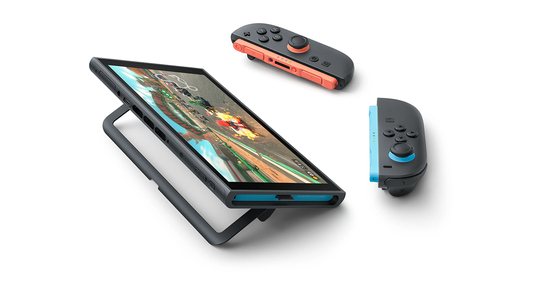Street Fighter 2 is one of the only games that truly deserve to be called "genre-defining" -- today, 25 years after SF2's release, we can see that practically every fighting game out there has adopted its core game design principles as industry-standard gospel, with only a few tweaks here and there to stand out from the crowd.
If you're the average consumer or dev, or even if you're an experienced fighting game competitor, you probably aren't all that familiar with all the games that have tried to make major changes to the fighting game template.
So, in celebration of SF2's 25th anniversary, I'm going to walk through some of the fascinating deviations and beautiful experiments that fighting game devs took to try and change SF2's fighting game formula. Studying these games may inspire you in your own designs, or may suggest ways to tinker with the paradigm you're currently wokring within.
I'm going to try to avoid the other well-known franchises (if you know Street Fighter, you probably also know Mortal Kombat and Tekken) and focus on the weird stuff... for education's sake!
A quick note about me: I've written a (free) book that teaches fighting game fundamentals using Street Fighter, as well as educational fighting game streams and videos, and I'm the community manager for a free-to-play PC fighting game currently in public technical alpha called Rising Thunder. You might also like my previous Gamasutra article, Street Fighter for Designers: Top 8 Lessons from Evo 2015.
Fighting games cut from SF2's cloth: Asuka 120% Burning Fest, Weaponlord, Marvel vs. Capcom 2, Guilty Gear
Asuka 120% Burning Fest (Fill-in Cafe, 1994): Clash system and simplified inputs
-2.jpg/?width=640&auto=webp&quality=80&disable=upscale)
SF2 may have set the foundations for the 2D fighter genre, but there are several notable games that have poked and prodded at some of the genre's conventions while keeping a similar format.
Shoutouts to ex-Game Developer magazine editor-in-chief Brandon Sheffield for introducing me to Asuka 120% Burning Fest, a Japanese 2D fighter from the post-SF2 boom. Not only did it swap the standard martial-artists-from-around-the-world fighter cast with high school girls representing their various club activities (including the chemistry and biology clubs), but it also made two notable system changes.
One was the "clash system": in SF2, if two attacks collide simultaneously, both players take damage and go into hitstun, but in Asuka 120%, both characters will just go on into the next hit-phase of the move. The second was a significantly simplified input system -- pretty much everyone has the same special move codes, meaning that if you could perform one character's moves, you could perform all of them.
Combined, both systems made for a fascinating permutation of the SF2 standard. With the clash system, the number of hits in a move are relevant for determining who wins a clash -- and since the window to cancel a move into another move is fairly lax, players can clash across entire combo routes before one of them wins out and takes damage. All told, Asuka 120% does a lot with these relatively simple system tweaks to make a traditional 2D fighting game more accessible and less intimidating without feeling like a lesser SF2. The developers of Asuka 120% Burning Fest eventually went to Treasure, where they reused some of the core concepts in their fighting games.
Weaponlord (Visual Concepts, 1995): An online fighting game in '95
Others have done good work unearthing Weaponlord's history as an interesting-but-ill-timed attempt by early American fighting game devs to challenge SF2's success, so if you want to know the whole story, check out the GameSpy interview with James Goddard and Dave Winstead, GameSpot's Forging Weaponlord, and the Hardcore Gaming 101 writeup.
From a modern game design perspective, the most notable contribution Weaponlord made to fighting games the active defense system called the "thrust block" -- a versatile parry that served as a high-risk, high-reward defensive option. This a relatively new innovation for the time, but more interesting to contemporary devs is this tidbit from the GameSpot interview with James Goddard, where he mentions that the thrust block was designed with zero-frame startup specifically as a concession to online play via the XBAND dialup peripheral.
That's right: A Super Nintendo game in 1995 was designed around internet play. Personally, as someone currently working on a fighting game built around online multiplayer over broadband, I can't imagine designing a 2D fighting game for ~250ms travel times, yet there they were, handling sync timing and tweaking frame data to make the game playable over a modem. Perhaps it shouldn't be a surprise that Goddard is currently design director on Killer Instinct for Microsoft, a game which has been lauded in core fighting game circles for having better-than-average netcode.
Marvel vs. Capcom 2: New Age of Heroes (Capcom, 2000): The best team fighter
Capcom had found plenty of success doing crossover fighting games during the late '90s, as their concurrent work on Street Fighter Alpha, Darkstalkers, and various licensed Marvel fighting games gave them plenty of readily reusable assets to keep the games coming. This peaked with Marvel vs. Capcom 2: New Age of Heroes, a three-on-three tag match slugfest so chaotic that even genre veterans could barely parse what is happening on screen at any given time.
Capcom's earlier crossover games (X-Men vs. Street Fighter, Marvel Super Heroes vs. Street Fighter, and Marvel vs. Capcom) had treated tag-team two-on-twos much like a similar pro wrestling match: You had one character on the field responding to your controls, and certain moves would allow you to tag them in, summon them for a brief assist attack, or perform a joint hyper combo together. MvC2 largely kept the same basic structure, but the addition of a third team member shifted the emphasis toward developing teams that synergized effectively between the three.
The ideal MvC2 team must take into account how well any given character can use the other two assists; how much super meter the team needs to build for each character to do its job, and how long it'll take to generate that meter before the opponent does; how well the team can recover from opponent-inflicted forced tag-outs (called "snapbacks"); and several other factors before even considering how effective the player is at controlling any of their characters individually.
It's a strange testament to MvC2's design that even though competitive play revolves around roughly 1/5th of the 56-character cast, the dozens of permutations available with just those characters are enough to have kept the game interesting for over a decade. The net effect is that MvC2, by virtue of its three-on-three format, has gotten the closest out of any fighting game to a compelling competitive 'build-your-own-character' mode.
Guilty Gear (Arc System Works, 1998): The 2D fighter for people who love 2D fighters
As Guilty Gear is still very much alive and kicking, I'll keep this brief. With GG and its sister series BlazBlue, Arc System Works has forgotten more about traditional 2D fighting games than most studios will ever begin to explore. Each GG character is practically its own fighting game at this point, often with resources and mechanics that exist only for that specific character -- and they're bound together by a set of core shared systems and mechanics that would be enough to populate five Street Fighters. If you're ever trying to design a character for pretty much anything, it's worth your time to dig through the GG library, because ASW probably did something like that way before you did.
Highlights include: Bridget, a young boy dressed as a nun who fights with a yo-yo that must be carefully placed and moved across the screen; Zato-1, a blind assassin who fights by summoning his shadow (which responds to the player's joystick inputs and button releases, meaning the player must simultaneously handle two characters with one controller, and time their button presses and releases appropriately); Venom, another assassin who lays pool balls across the screen to create intricate setups off their chain collisions; and most recently, Jack-O, whose minion-summoning mechanics draw more from a MOBA than a fighting game.
Stylized realism: Bushido Blade, Buriki One, Fighter's Destiny
Bushido Blade (Light Weight, 1997): Real-enough samurai duels
One frequent criticism of traditional fighting games is that they don't look or feel like a real fight does, leading a handful of developers to build games aiming for a more realistic experience without getting into the sporty nature of a Fight Night or UFC game.
When I put the call out on Twitter for suggestions for this list, Bushido Blade was hands-down the most frequent response. Instead of street fighting, Bushido Blade aimed to recreate the thrill of a samurai duel by breaking out from the 2D plane into free-roaming 3D environments and designing a realistic damage system; you could block or parry, but if you ate a clean hit it was either going to injure a limb or kill you outright.
When most fighting games were going for more systems, more characters, more stylized graphics, more combos, and generally digging itself deeper in a hole of genre esoterica, Bushido Blade felt simple and clean. Interestingly enough, its legacy is best felt not in any major triple-A fighting game, but in indie games Nidhogg and Divekick.
Fighters Destiny (Genki, 1998): Point-sparring in a fighting game
No tags.





































